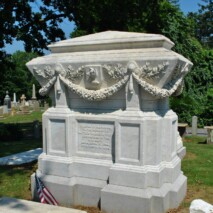
Spending the summer restoring and cleaning the family plot of Commodore Matthew C. Perry, USN, of Newport, Rhode Island.
Matthew Perry – Early Life & Career:
Born at Newport, RI, on April 10, 1794, Matthew Calbraith Perry was the son of Captain Christopher Perry and Sarah Perry. In addition, he was the younger brother of Oliver Hazard Perry who would go on to earn fame at the Battle of Lake Erie. The son of a naval officer, Perry prepared for a similar career and received a warrant as a midshipman on January 16, 1809. A young man, he was assigned to the schooner USS Revenge, then commanded by his older brother. In October 1810, Perry was transferred to the frigate USS President where he served under Commodore John Rodgers.
A strict disciplinarian, Rodgers imparted many of his leadership skills to the young Perry. While aboard, Perry took part in an exchange of gunfire with the British sloop-of-war HMS Little Belt on May 16, 1811. The event, known as the Little Belt Affair, further strained relations between the United States and Britain. With the outbreak of hostilities of the War of 1812, Perry was aboard President when it fought an eight-hour running battle with the frigate HMS Belvidere on June 23, 1812. In the fighting, Perry was slightly wounded.
Matthew Perry – War of 1812:
Promoted to lieutenant on July 24, 1813, Perry remained aboard President for cruises in the North Atlantic and Europe. That November, he was transferred to the frigate USS United States, then at New London, CT. Part of the squadron commanded by Commodore Stephen Decatur, Perry saw little action as the ships were blockaded in port by the British. Due to these circumstances, Decatur transferred his crew, including Perry, to President which was anchored in New York.
When Decatur unsuccessfully attempted to escape the blockade of New York in January 1815, Perry was not with him as he had been reassigned to the brig USS Chippawa for service in the Mediterranean. With the war’s end, Perry and Chippawa cruised Mediterranean as part of Commodore William Bainbridge‘s squadron. After a brief furlough in which he worked in the merchant service, Perry returned to active duty in September 1817, and was assigned to the New York Navy Yard. Posted to the frigate USS Cyane in April 1819, as executive officer, he aided in the initial settlement of Liberia.
Matthew Perry – Rising Through the Ranks:
Completing his duty, Perry was rewarded with his first command, the twelve-gun schooner USS Shark. Serving as the vessel’s captain for four years, Perry was assigned to suppress piracy and the slave trade in the West Indies. In September 1824, Perry was reunited with Commodore Rodgers when he was posted as executive officer of USS North Carolina, the flagship of the Mediterranean Squadron. During the cruise, Perry was able to meet with Greek revolutionaries and the Captain Pasha of Turkish fleet. Before returning home, he was promoted to master commandant on March 21, 1826.
Matthew Perry – Naval Pioneer:
After moving through a series of shore assignments, Perry went back to sea in April 1830, as the captain of the sloop USS Concord. Transporting the US envoy to Russia, Perry declined an invitation from the czar to join the Russian Navy. Arriving back in the United States, Perry was made second-in-command of the New York Navy Yard in January 1833. Deeply interested in naval education, Perry developed a naval apprentice system and helped establish the US Naval Lyceum for the education of officers. After four years of lobbying, his apprentice system was passed by Congress.
During this time he served on the committee that advised the Secretary of the Navy in regard to the US Exploring Expedition, though he declined command of the mission when offered. As he moved through various posts, he remained devoted to education and in 1845, assisted in developing the initial curriculum for the new US Naval Academy. Promoted to captain on February 9, 1837, he was given command of the new steam frigate USS Fulton. A significant advocate for the development of steam technology, Perry conducted experiments to improve its performance and ultimately earned the nickname “Father of the Steam Navy.”
This was reinforced when he founded the first Naval Engineer Corps. During his command ofFulton, Perry conducted the US Navy’s first gunnery school off Sandy Hook in 1839-1840. On June 12, 1841, he was appointed the Commandant of the New York Navy Yard with the rank of commodore. This was largely due to his expertise in steam engineering and other naval inventions. After two years, he was appointed commander of the US African Squadron and sailed aboard the sloop-of-war USS Saratoga. Tasked with fighting the slave trade, Perry cruised the African coast until May 1845, when he returned home.
Matthew Perry – Mexican-American War:
With the beginning of the Mexican-American War in 1846, Perry was given command of the steam frigate USS Mississippi and made second-in-command of the Home Squadron. Serving under Commodore David Connor, Perry led successful expeditions against Frontera, Tabasco and Laguna. After returning to Norfolk for repairs in early 1847, Perry was given command of the Home Squadron and aided General Winfield Scott in the capture of Vera Cruz. As the army moved inland, Perry operated against the remaining Mexican ports cities, capturing Tuxpan and attacking Tabasco.
Matthew Perry – Opening Japan:
With the end of the war in 1848, Perry moved through various shore assignments before being returned to Mississippi in 1852, with orders to prepare for a voyage to the Far East. Instructed to negotiate a treaty with Japan, then closed to foreigners, Perry was to seek an agreement which would open at least one Japanese port to trade and would secure the protection of American seamen and property in that country. Departing Norfolk in November 1852, Perry assembled his squadron at Napa in May 1853.
Sailing north with Mississippi, the steam frigate USS Susquehanna, and the sloops-of-war USSPlymouth and Saratoga, Perry reached Edo, Japan on July 8. Met by Japanese officials, Perry was ordered to sail for Nagasaki where the Dutch had a small trading post. Refusing, he demanded permission to present a letter from President Millard Fillmore and threatened to use force if denied. Unable to resist Perry’s modern weaponry, the Japanese permitted him to land on the 14th to present his letter. This done, he promised the Japanese that he would return for a response.
Returning the following February with a larger squadron, Perry was warmly received by Japanese officials who had acquiesced and prepared a treaty that fulfilled many of Fillmore’s demands. Signed on March 31, 1854, the Treaty of Kanagawa ensured the protection of American property and opened the ports of Hakodate and Shimoda to trade. His mission complete, Perry returned home by merchant steamer later that year.
“Newport’s Black Ship Festival Celebrating its 30th Anniversary, The Japan-America Society and Black Ships Festival of R.I. was honored to have been chosen by the Ministry of Foreign Affairs in Japan to receive its prestigious citation from the Minister. This acknowledged the Society’s dedication to developing and understanding educational and economic ties between the citizens of Rhode Island and Japan. The citation was presented by The Honorable Keizo Obuchi, former Prime Minister of Japan.
The Black Ships Festival commemorates the historic achievements of Commodore Matthew C. Perry, USN, of Newport, Rhode Island. The “Black Ships,” or “Kurofune,” refers to the Japanese term for foreign ships which, with one exception, were excluded from Japan for two hundred years until 1854. Commodore Perry negotiated the Treaty of Kanagawa in 1854, the first treaty between the United States and Japan, thus ending two centuries of Japanese isolationism. The Black Ships Festival celebrates the signing of the treaty, which brought the two countries together as trading partners.
The Black Ships Festivals in Newport and in its Japanese Sister City, Shimoda, commemorate this historic event with a celebration of friendship.
The Black Ships Festivals in Newport and in its Japanese Sister City Shimoda, commemorate this historic event with a celebration of friendship.”
Matthew Perry – Later Life
Voted a reward of $20,000 by Congress for his success, Perry embarked on writing a three-volume history of the mission. Assigned to the Efficiency Board in February 1855, his main task was the completion of the report. This was published by the government in 1856, and Perry was advanced to the rank of rear admiral on the retired list. Living in his adopted home of New York City, Perry’s health began to fail as he suffered from cirrhosis of the liver due to heavy drinking. On March 4, 1858, Perry died in New York. His remains were moved to Newport, RI by his family in 1866.





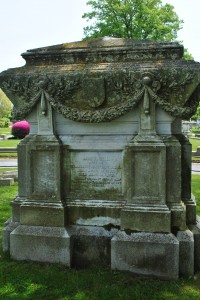








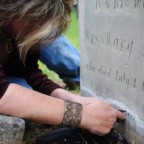
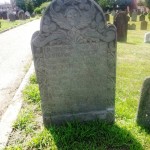
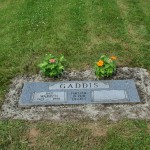

I needed to thank you for this good read!! I certainly enjoyed every little bit of it. I’ve got you bookmarked to check out new stuff you post eadkbkgfecak